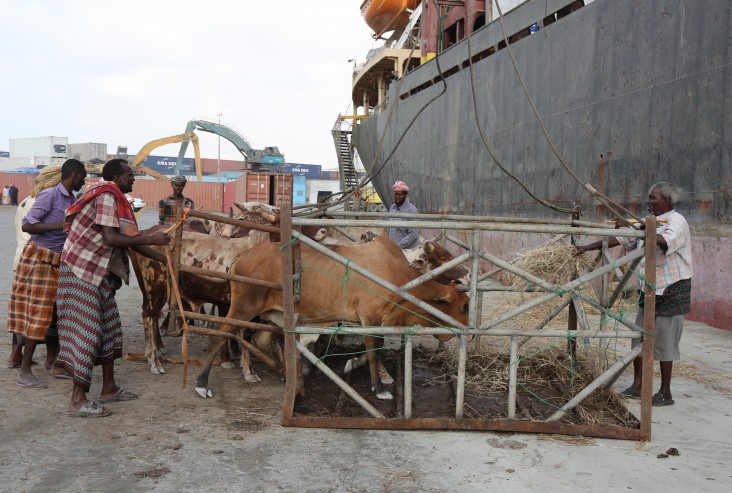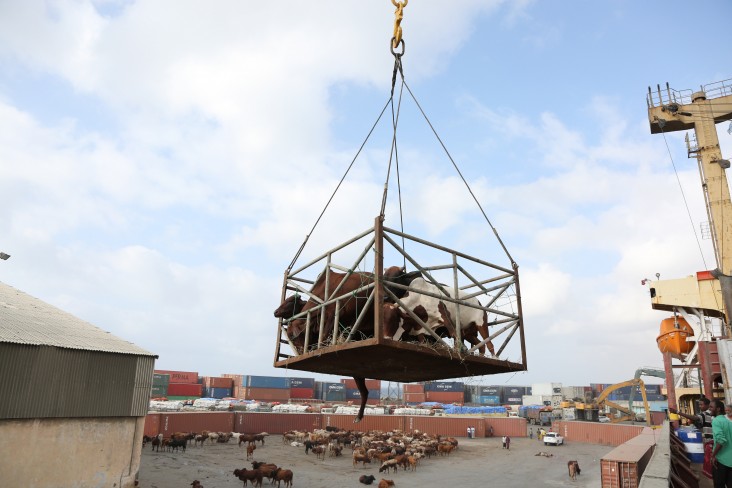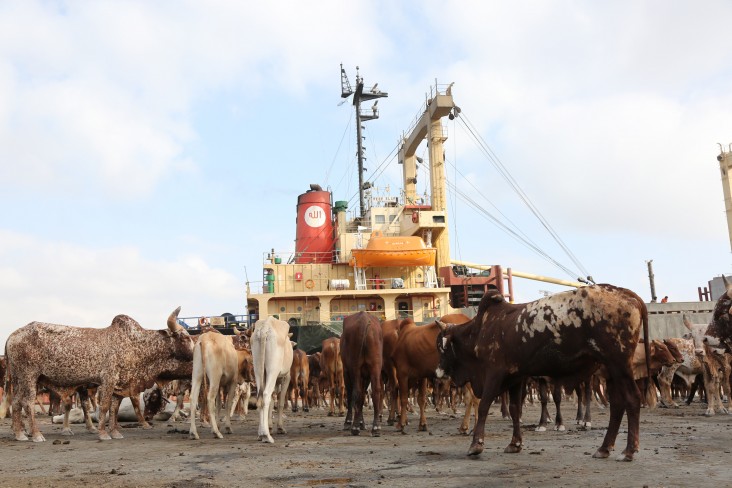Speeches Shim

September 2017—The livestock export industry is an essential component of the Somali agricultural sector, accounting for 80 percent of Somalia’s exports. In 2015 alone, traders earned $384 million in livestock exports, and the industry witnessed an annual growth of 6 percent.
Unfortunately, the gains made in the livestock sector over the past three years are at risk of being erased. Due to Saudi Arabia’s ban on Somali livestock this year, along with two consecutive seasons of poor rainfall leading to severe drought, Somalia has lost $1.7 billion in livestock and crops in 2017, according to the World Bank.
Lack of pasture and water has led to the death of many animals, and those that have survived the harsh conditions are weak, unproductive, more susceptible to disease, and worth less when sold or traded for other food items.

To safeguard the livelihoods of pastoralists affected by the drought and provide efficient support to those most in need, USAID’s Growth, Enterprise, Employment and Livelihoods activity is helping Somalia’s private sector to create market linkages and improve sales. The project increased Somalia’s livestock exports by paying a portion of the shipping costs of high-quality fodder to build and maintain animal health and weight while in quarantine. So far in 2017, 3,000 cattle valued at $1.5 million and 30,000 goats valued at $1.4 million were purchased from local pastoralists and shipped to the Middle East.
“Livestock is the backbone of the Somali economy. We buy cattle, goats and camels from the local pastoralists in the southern regions of Somalia and export them to the Middle East,” says Yussuf*, director of a quarantine company in Mogadishu. “This year, the drought has severely affected the supply of livestock. Too many animals have died and communities have lost their only source of livelihood and income.”
USAID’s intervention is designed to assist market participants in saving severely weakened but otherwise healthy animals instead of letting them die. This ensures that there is still a market for the livestock and that people have access to income to carry them through the drought.

“Between buying the livestock from the pastoral areas, loading them on to the deck, certifying their health, and boarding them on to the ships, we employ more than 1,000 people,” adds Yussuf. “This way, income flows to the Somali families, and pastoralists that supply us with cattle have enough to not only survive this drought but recover for the next season.”
USAID’s Growth, Enterprise, Employment and Livelihoods program, which runs from 2015 to 2020, is helping to boost Somali exports and increase jobs in regions recovering from years of conflict and recurrent natural disasters. The program is designed to promote inclusive economic growth throughout Somalia and accelerate the country’s integration into the global economy through improved competitiveness, new investments, and increased market linkages and business partnerships.
*Name changed to protect identity.
LINKS
Follow @USAIDSomalia on Facebook, on YouTube

Comment
Make a general inquiry or suggest an improvement.